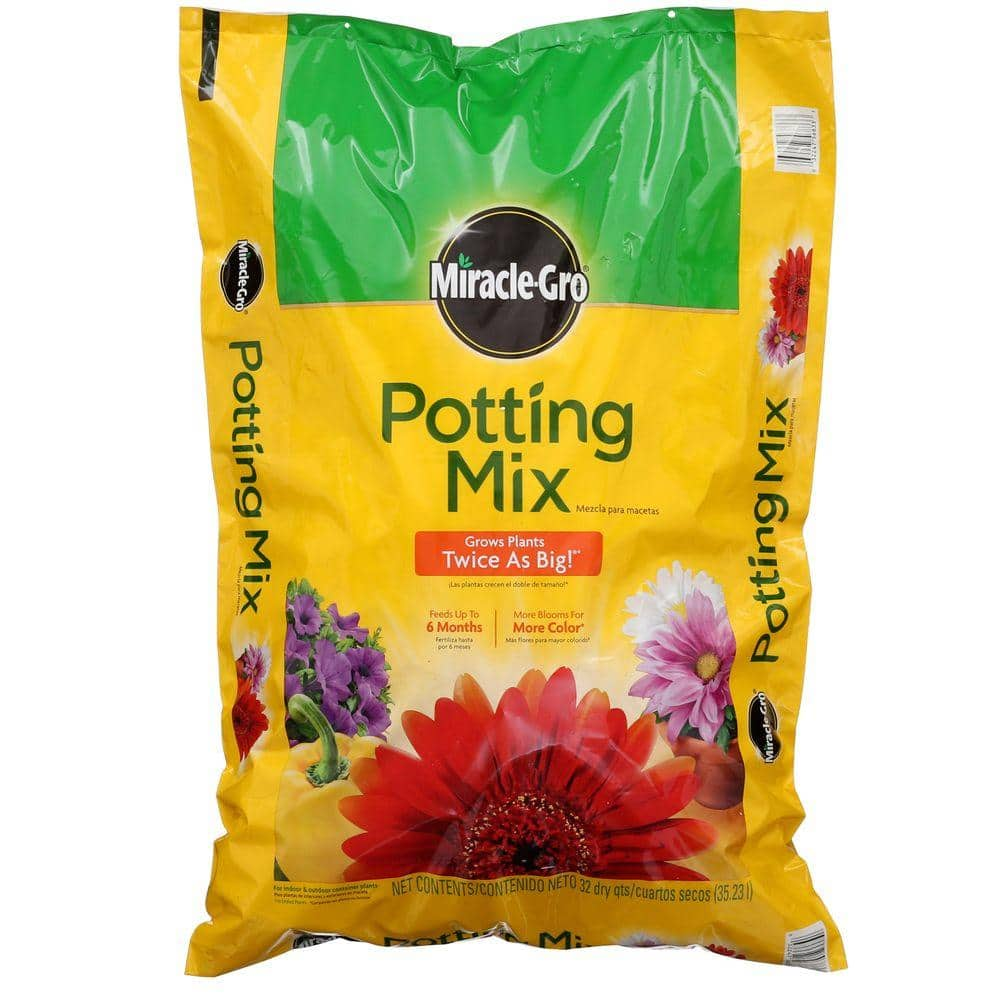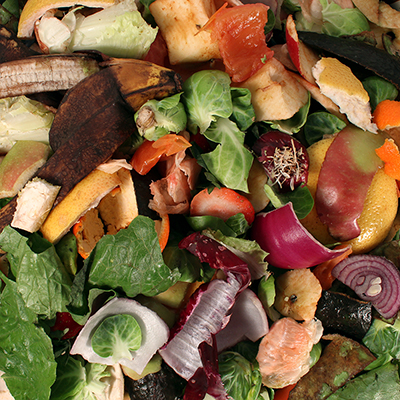Regrow Vegetables from Scraps
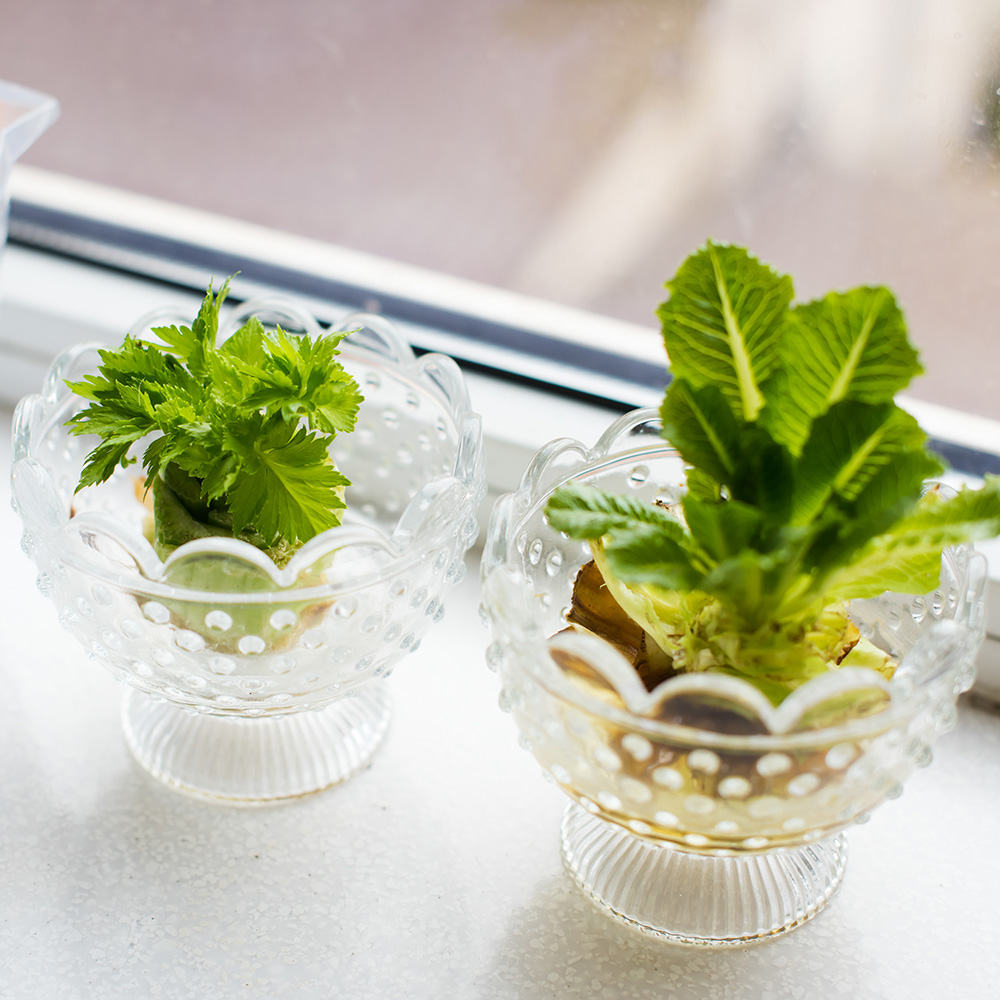
Last updated September 7, 2023
Fresh vegetables add flavor and depth to your favorite home-cooked meals. You can reduce food waste by learning how to regrow vegetables from scraps. The parts of vegetables you usually toss, like carrot tops or lettuce bottoms, can turn into new plants. This also makes for great at-home science experiments with kids. Read this easy guide to discover how to regrow common vegetables at home.
Table of Contents
Lettuce
Potatoes
Green Onions
Garlic
Ginger
Celery
Lettuce
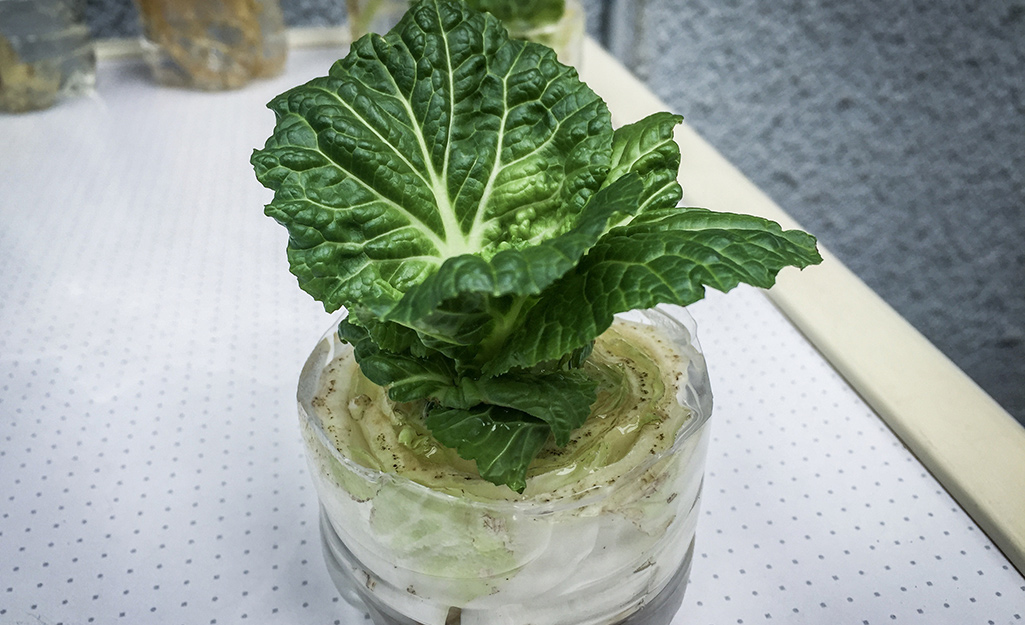
Most varieties of lettuce, bok choy and cabbage can be regrown from the root. Cut off the bottom section of the lettuce and place the flat end in one-half inch of water and set in a sunny window. Top off with water as needed. After three to four days, roots and new shoots should emerge. Once this happens, transfer and plant in soil. Lettuce will continue to grow in the soil as long as it has light and water and the temperature doesn't get too hot.
Potatoes

Cut a raw white or sweet potato with visible sprouts or eyes in half.
- Insert toothpicks between the cut edge and top of the potato and suspend it in a container of water, cut-side down.
- Place in direct sunlight.
- Sprouts should emerge from the top of the potato in about four days.
- Once the sprouts reach 4 inches, twist them off and set in a dish of shallow water. Change the water every few days.
- Plant them in organic soil when the sprouts have 1-inch roots.
Green Onions
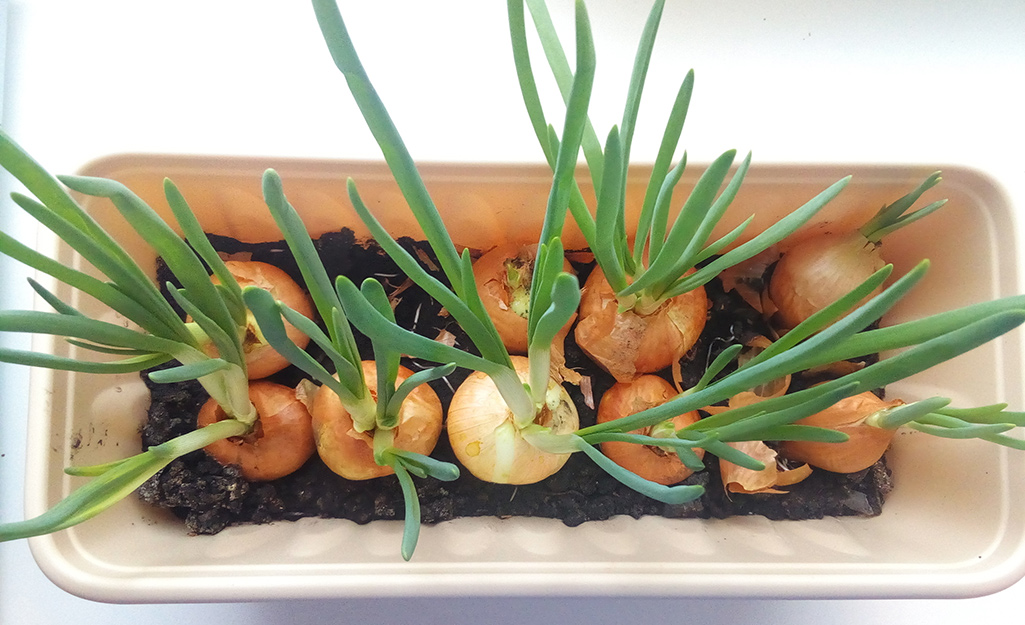
Green onions are one of the easiest vegetables to regrow. They sprout new roots quickly and are fast-growning plants.
About 1 inch from the roots, cut the green section off, leaving the white base. Place the base in a glass container and add water, but don’t fully submerge the base. Place in a sunny window. Change water every few days and snip stalks for cooking as needed.
Garlic
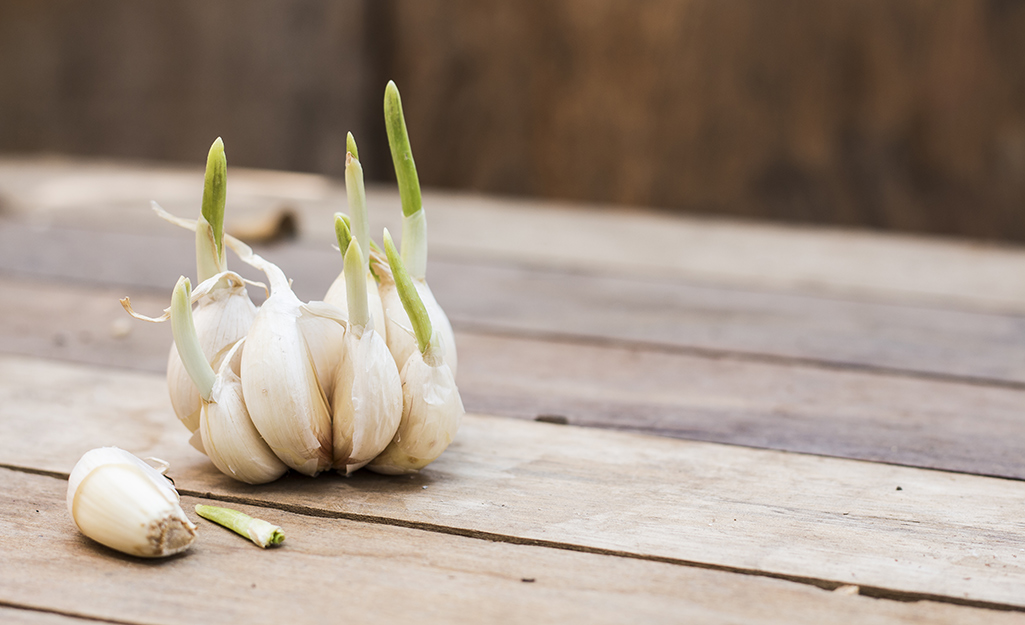
Garlic can be grown from a bulb.
- Place a clove, flat side down, in shallow water or directly into soil, and wait for shoots to emerge from the top.
- Place in full sun.
- Once new shoots have established, cut them back so your plant produces a bulb.
- Plant bulbs in the fall for bigger and more flavorful results. In areas that get a hard frost, plant six to eight weeks before first frost. In southern areas, February or March is a better time to plant.
Ginger
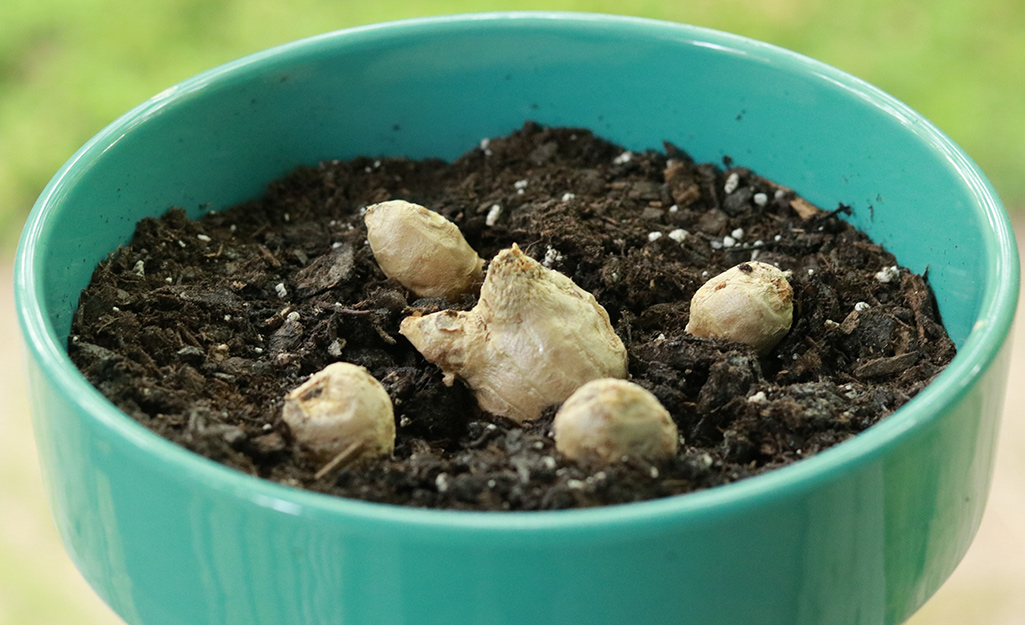
Growing
ginger is as simple as planting a piece that has at least one eye.
- With a knife, cut the ginger into 1-inch pieces, making sure that each piece has eyes.
- Fill a container with organic soilless potting mix and pour water over it until it's just damp. Let any extra water drain into the plant saucer.
- Plant the ginger pieces in the soil and cover with a couple more inches of soil.
- Set the pot in bright light and water when the soil is dry.
- After a few months, when you see shoots, pull back the soil and snap off the new ginger root growth.
Celery
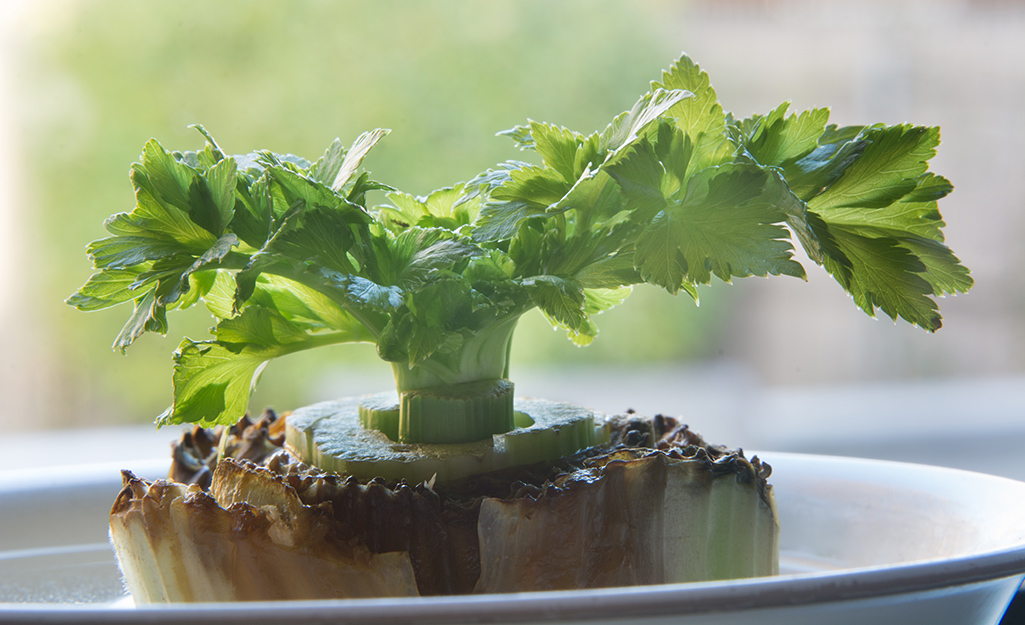
Grow crunchy celery stalks using the base from store-bought bunches.
●
Cut the stalks off about two inches from the celery base.
●
Put the celery base in a shallow bowl of water without fully covering it.
●
After a few days, you should see new roots and leaves.
●
Continue adding water and change it every few days.
●
After about one week, plant the celery base in fresh soil. Keep the new leaves above the surface.
●
Keep watering the celery until you have a new bunch to pick.
Regrowing scraps is a fun and interesting experiment. These projects are a good way to engage with your kids on how food is produced. It’s also a great way to cut down on food waste.
Not all scraps will grow into new vegetables. Grocery store produce can sometimes be treated with chemicals that prevent new growth. Produce that’s shipped long distances may also be too old or damaged for regrowth. Choosing organic produce can tend to be more successful.
Use The Home Depot Mobile App to local products and check inventory. You can also visit The Home DepotGarden Center for seeds and vegetables to plant.



